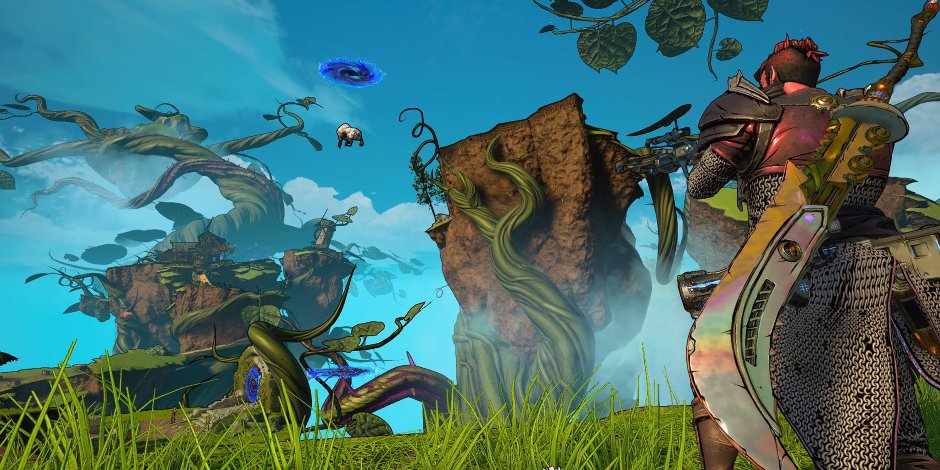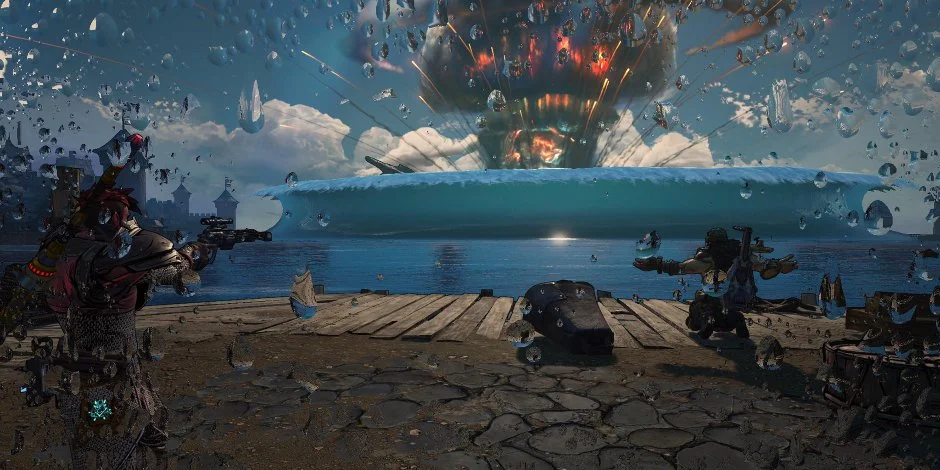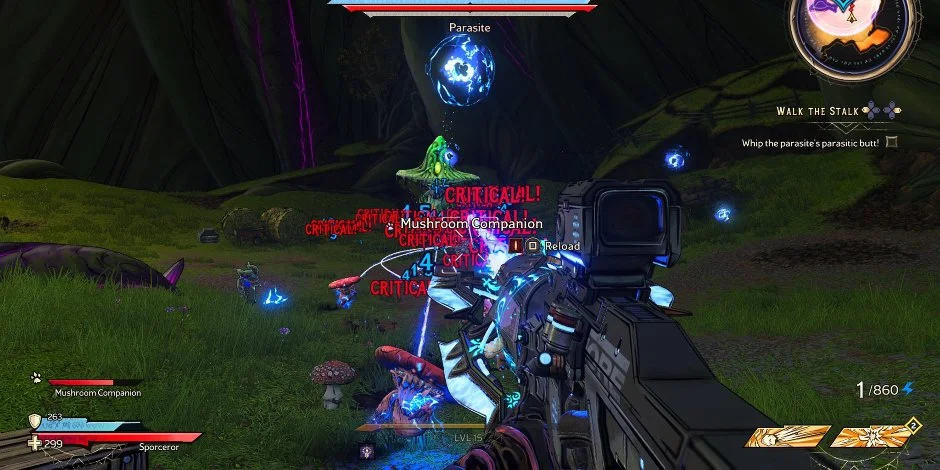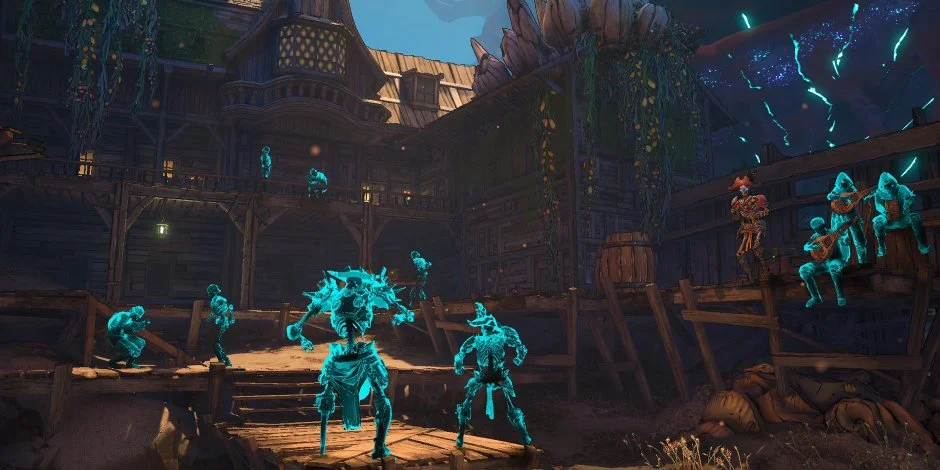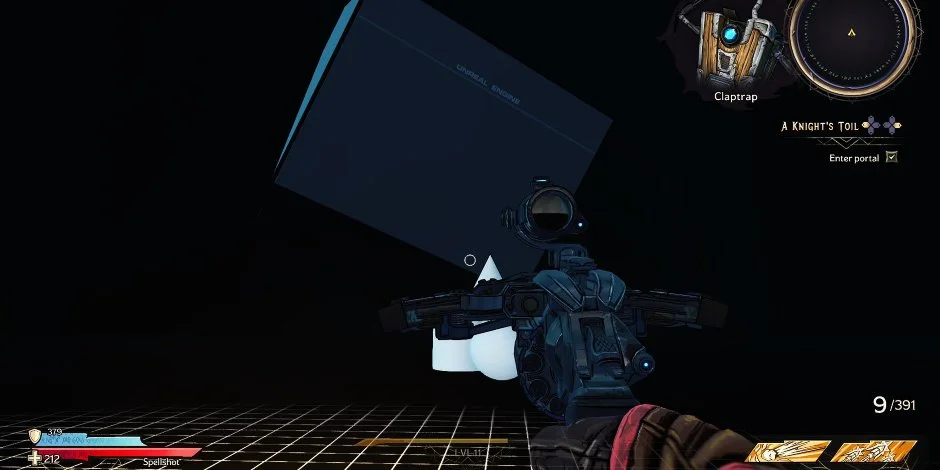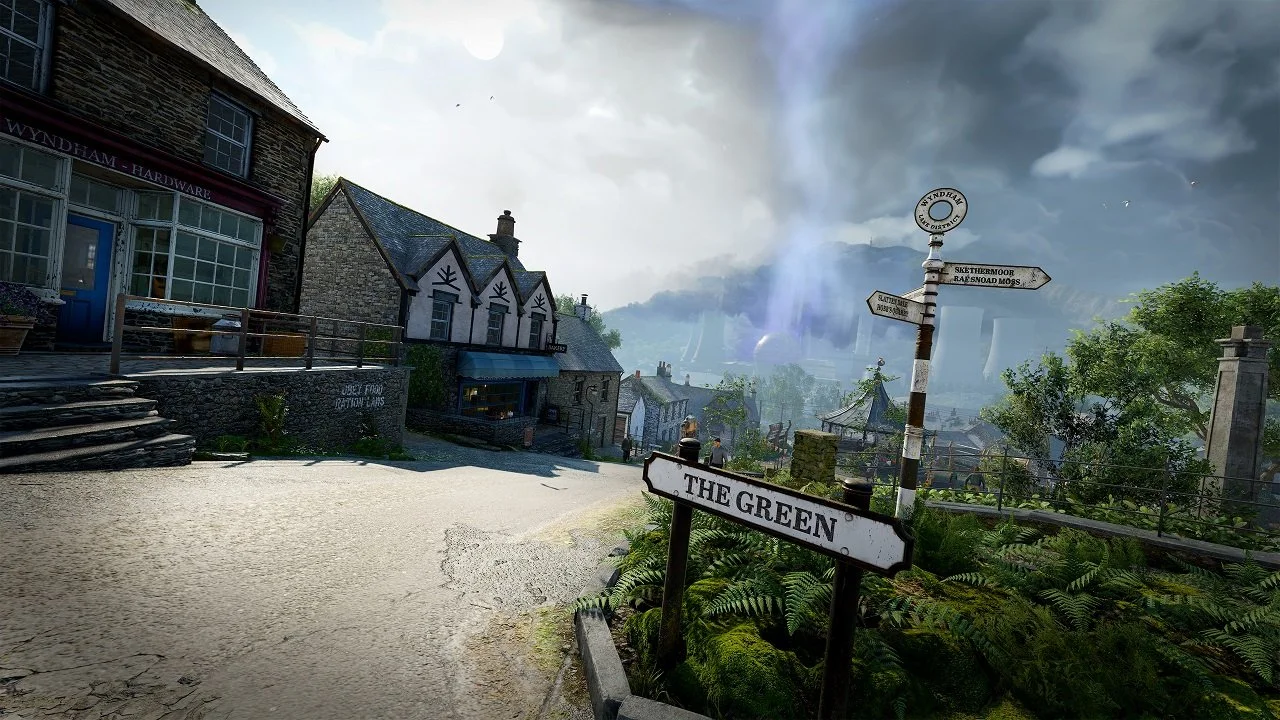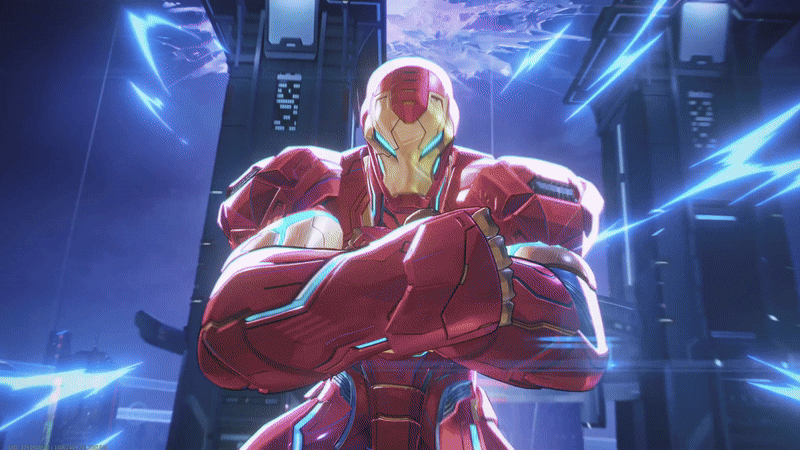PlayStation 5 Review Code Provided by 2K
The Borderlands franchise is well known for its irreverent humor and ludicrous variety of guns, but its trademark aesthetic has been a staple of the series since it first began over a decade ago. The grungy, post-apocalyptic world clashed with the zany comedic tone to create a video game unlike anything that had come before.
Gearbox Software has now expanded beyond this aesthetic with Tiny Tina’s Wonderlands, a fantasy-fueled romp through a tabletop world of the titular character’s imagination. Inspired by the Assault on Dragon Keep expansion for Borderlands 2, Wonderlands brings some much-needed novelty to the Borderlands series while elevating the franchise’s combat and character customization in clever and profound ways.
Story
Tiny Tina’s Wonderlands tells a remarkable tale filled with ridiculous characters, incredible environments, and a surprisingly heartfelt conclusion that hearkens back to some of the series’ best and most emotional beats. Wonderlands is based around a tabletop game called Bunkers & Badasses (B&B), which is the Borderlands version of Dungeons & Dragons.
B&B was first introduced as part of the Assault on Dragon Keep expansion for Borderlands 2, and Wonderlands is essentially a fully realized version of that DLC pack. In this game, players, in the role of the Fatemaker, are challenged with taking down the Dragon Lord, an evil necromancer who will stop at nothing to destroy the Wonderlands and build a new empire on top of its ashes. Joining the Fatemaker on their quest are Valentine and Fret, two new characters in the series, while Tiny Tina herself takes on the role of the Bunker Master, a god-like figure who designs and narrates everything in the game.
What begins as a simple tale of revenge and world-saving quickly unravels into a strange and often beautiful tale of misplaced aggression, grief, and loss of identity. Wonderlands offers some incredible narrative beats that push the boundaries of what I’d come to expect from the Borderlands franchise. While the majority of the story sticks to the Borderlands formula of silly, topical comedy, the last hour or so directly addresses the emotional issues at the heart of the campaign. There’s even a slight nod to the Assault on Dragon Keep content and the events of Borderlands 2 that brought a tear to my eye.
New and returning characters make their mark in interesting ways, from Mr. Torgue’s explosive personality literally blowing up an ocean, to the cheekily named Bones Three-Wood providing his backstory through a nostalgia-fueled, amusement park ride. The standouts, though, are Fret, Valentine, and the Dragon Lord. Voiced by Wanda Sykes, Andy Samberg, and Will Arnett, respectively, each one of these characters could easily have been little more than celebrity guest appearances, popping up every few hours for a dramatic cutscene.
I was pleasantly surprised to find that all three actors voiced a staggering amount of dialogue for the game, including many lines that can only be found in certain side quests. That each character and actor fits the universe so well is a testament to both Gearbox’s writing team and the talent of these performers. And I’d be remiss if I didn’t mention Ashley Burch’s predictably stellar performance as Tiny Tina, a delivery that continues to cement the character as one of the greatest in gaming.
Gameplay
Wonderlands might just be the best the series has ever felt, combat-wise. I found myself desperately seeking out new enemy encounters if only to test out a new spell I’d found or to see a new skill in action. It’s a visceral joy that the franchise hasn’t quite captured since Borderlands 2 was released almost a decade ago.
The gun improvements Gearbox made with Borderlands 3 are present in Wonderlands, but this game adds in a few new twists of its own to really make gunplay feel unique. A new crossbow weapon type alters how guns fire while adding unique skills related to how many bolts are stuck in an enemy at one time. There are also new variations on the Borderlands weapons with throwable magazines that create fantasy-oriented companions to support the player during battle.
Spells, a new type of loot that replaces the traditional grenades, are easily the best part of how Wonderlands shakes up the series’ combat. Each spell has the capacity to deal incredible damage or subdue enemies with a variety of different elemental effects at the cost of lengthy cooldowns. They’re some of the most powerful tools in the game and seeing how each one worked was always fun.
I leaned into spell-casting as part of building my character, and the nuance of the skill trees allowed me to focus on enhancing their potency while reducing cooldown times. My first class was the Spellshot, a magical character that has the ability to equip two spells at once. The balance each skill tree has is remarkable, and it’s made all the more compelling once you unlock the ability to multi-class
With multi-classing, players can combine their starting class with any of the other, available classes in the game, gaining access to that class’s skill tree, action skills, and passive perk. By combining my Spellshot with the dark magic-wielding Graveborn, I was able to further buff all my spells with dark magic while instantly regenerating health every time I cast a spell. With over a dozen possible class combinations, there’s an unprecedented incentive to replay the entire game with a totally different build.
And the opportunities to use all of these combat mechanics don’t end after the credits roll. Once players have beaten the game, they’ll unlock the Chaos Chamber, an endgame mode focused on exhilarating combat encounters in which players will face increasingly difficult waves of enemies with special modifiers. It’s a compelling bit of additional content that offers a high-level challenge while rewarding some of the game’s most sought-after gear.
It's also worth mentioning that Wonderlands introduces a novel method of traveling around the world that completely removes the need for motorized vehicles. The Overworld connects all the disparate, explorable regions in the game, allowing players to simply walk to their objective without missing a beat. What’s more, the Overworld itself is filled with hidden collectibles, secret pathways, and side quests that make it a fun and engaging area in its own right.
Audio and Visual
Wonderlands has some great music across the variety of environments that make up its world, especially in the pirate-themed locales. There’s one great sequence that evokes a certain, famous amusement park attraction, and it even features a variation on that one sea shanty the internet was obsessed with about two years ago. The credits also feature the excellent song “Critical Hit” by No More Kings, which is just an example of brilliant song selection.
What’s a little strange about the game’s audio, though, is that some of the enemies don’t seem to make any noise at all. It’s hard to tell if it’s just a glitch or a deliberate choice, but many enemies are conspicuously silent, including at least one boss battle. It’s jarring to dodge tidal waves and the punches of a colossal merman when he barely makes a peep.
Visually, Wonderlands might be the series at its best. I credit the fantasy aesthetic for this, as it gave the developers a lot more to work with in terms of environmental design. Many of the biomes players will visit on this adventure are downright stunning, whether they’re at the bottom of a recently exploded ocean or among the crumbling ruins of medieval castles.
What Could Be Better
There are more than a few bugs that, while not game-breaking, did impact my experience in a negative way. There’s an issue in certain areas that caused debilitating framerate dips, a problem I didn’t expect to encounter in a current-gen game. I also encountered visual bugs that caused item assets to appear as other objects while in my inventory. Trinkets sometimes looked like guns, while rings occasionally appeared as wards. While this glitch didn’t impact gameplay, it did make organizing my gear significantly more confusing.
This brings me to the clunky menu UI. It’s a problem the series has had for years, and it somehow feels worse in Wonderlands. Because there are so many different items to equip in this game, it often feels like my backpack is overflowing with loot, and combing through each weapon, trinket, and ward to cultivate the best pieces felt like more work than the rest of the game. I would love to see a more streamlined method of comparing different pieces of gear, as well as easier access to the bank, as traveling back and forth to Brighthoof to store items quickly became a chore.
Verdict
Tiny Tina’s Wonderlands is everything I’d hoped it would be and more. Though it never quite reaches the emotional depth of Borderlands 2, Wonderlands shows that Gearbox is aware that the more dramatic and heartfelt story beats are where the series is at its strongest. With its new combat mechanics, compelling and hilarious characters, and beautiful world filled with challenging enemies, Tiny Tina’s Wonderlands is a triumphant spinoff that stands confidently alongside the best titles Gearbox has ever produced.
